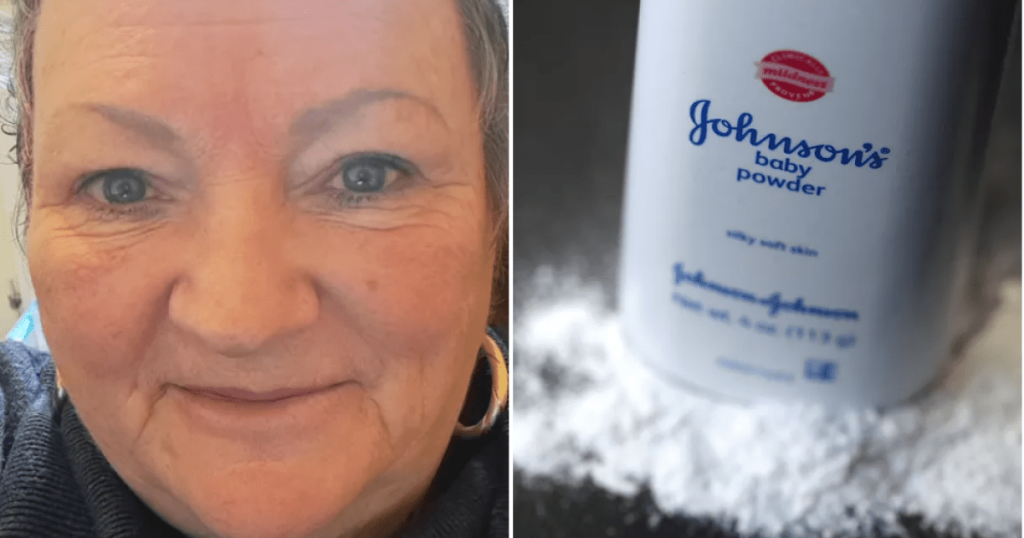Julie Whytock’s Allegations and the Johnson & Johnson Talc Powder Lawsuit
Julie Whytock, a 64-year-old woman from Hertfordshire, England, is suing Johnson & Johnson (J&J), alleging that their talcum powder caused her ovarian cancer. Ms. Whytock claims she used J&J’s talc powder regularly since childhood, "at least once a day," incorporating it into her hygiene routine after bathing, swimming, and for general skin care. She also states that talc powder was a common household product in her family, used by her mother and subsequently by Ms. Whytock with her own children. The familiar scent of the powder evokes nostalgic memories for her. However, in March of the previous year, Ms. Whytock was diagnosed with stage three ovarian cancer, a devastating diagnosis that dramatically altered her life’s course.
Ms. Whytock’s cancer diagnosis led to a grueling 26-week hospital stay, during which she underwent chemotherapy treatment. The prolonged hospitalization, coupled with the daunting prognosis, severely impacted her mental health, pushing her to the brink of despair and suicidal thoughts. She credits her three sons as her primary source of strength and motivation during this challenging time, believing that without their support, she may not have survived the ordeal. Adding to her hardship, Ms. Whytock was forced to leave her job as a Quality Assurance Manager due to her illness, leaving her in precarious financial circumstances. Her planned transition to a new role was thwarted by her diagnosis and subsequent hospitalization.
Ms. Whytock’s case is not isolated. She is one of over 2,000 individuals involved in legal action against J&J, claiming they developed various cancers after exposure to asbestos allegedly present in the company’s talcum powder. KP Law, the firm representing the claimants, estimates that more than 100,000 people may have been diagnosed with different forms of cancer linked to the use of J&J’s talc products. The legal battle revolves around the alleged presence of asbestos in the talc and its potential link to cancer.
Johnson & Johnson’s Response and the Scientific Debate
J&J vehemently denies the allegations, asserting that their talc powder has never contained asbestos and that they take the safety of their products very seriously. The company emphasizes its rigorous testing protocols and transparency with regulatory bodies and researchers, claiming that all scientific findings demonstrate the absence of asbestos contamination in their talcum powder products, including Johnson’s Baby Powder. Furthermore, J&J argues that independent scientific research does not support a causal link between talc and ovarian cancer or mesothelioma. They contend that the plaintiffs’ lawyers are propagating a false narrative about talc and its alleged contamination.
The scientific community’s stance on the matter is complex. While some studies have suggested a possible association between talc use, particularly in the genital area, and an increased risk of ovarian cancer, the evidence remains inconclusive. The World Health Organization classifies talc that contains asbestos fibers as “carcinogenic to humans” and talc not containing asbestos as “not classifiable as to its carcinogenicity to humans”. Interpreting these studies is challenging due to variations in research methodology and potential confounding factors. The debate also includes the distinction between talc containing asbestos, which is known to be carcinogenic, and talc that is asbestos-free.
Corporate Actions and Legal Proceedings
In August 2022, facing mounting lawsuits, J&J announced it would discontinue the global sale of its talc-based baby powder. This decision marked a significant shift in the company’s strategy, although they maintained their position regarding the product’s safety. In 2023, J&J completed the spin-off of Kenvue, a consumer health company that now holds the responsibility for any potential liabilities related to talc products sold outside the US and Canada. This corporate restructuring further complicates the legal landscape.
The legal battles continue, with both sides presenting their arguments and evidence. J&J points to verdicts in their favor in the majority of US trials, while the plaintiffs emphasize the significant number of individuals who have come forward with cancer diagnoses after using talc products. The UK legal case, spearheaded by KP Law, argues for justice for the claimants who have suffered life-altering illnesses and, in some tragic instances, have succumbed to their cancer. The Department for Business and Trade in the UK has reaffirmed its stance on asbestos as a prohibited substance in cosmetics, highlighting the responsibility of manufacturers to ensure product safety and conduct thorough risk assessments.
The Human Cost and the Ongoing Struggle for Justice
Beyond the legal and scientific arguments, Julie Whytock’s story highlights the devastating human impact of cancer and the challenges faced by those battling this disease. Her experience demonstrates the physical, emotional, and financial burdens that cancer patients and their families endure. Ms. Whytock’s determination to remain positive despite her hardships speaks to the resilience of the human spirit. The ongoing legal proceedings represent a fight for justice and accountability, not only for Ms. Whytock but also for the thousands of others who believe their cancer diagnoses are linked to the use of J&J’s talcum powder. The outcome of these cases will have significant implications for both consumer safety regulations and corporate responsibility in the cosmetics industry.











